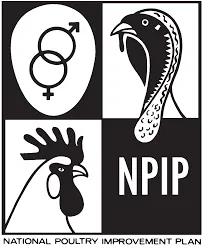Wood Duck _$125/pair
Eggs/live birds are ship USPS or locally pickup or arrange for ground delivery. Live birds Shipping fee is charged at a discounted rate -$100 for up to 4 birds Fertile eggs shipping fee -$15 We ship only in USPS approved shipping containers. We ship through USPS priority express mail. 1-2days estimated arrival time. Live guarantee on all shipment. We ship birds out weekly Mondays- Wednesdays. No shipping on public holidays. Tracking # will be email after the birds have been sent. Usually from 5-6pm the day of shipment
Palmfarmsteads
They can have a lot of ducklings
The wood duck is the only duck in North America that commonly produces two broods of offspring in a breeding season, the Cornell Lab reports. This contributes to the large number of offspring wood ducks can produce, but it's not the only factor. The females will typically lay between six and 16 eggs per brood. This is not too much greater than a mallard, which will lay between one and 13 eggs per brood.
However, consider that wood ducks often have two broods in a breeding season, doubling their offspring in a given year. This is typical in the southern part of their territory, while wood ducks in the northern reaches of their range may only have one brood, the Audubon Society reports.
Even more ducklings can be hatched each season because of a practice called egg dumping. When wood ducks establish nests close to other wood duck nests, the females sometimes lay eggs in nests other than their own, the National Wildlife Federation reports. For this reason, wood duck nests have been found with as many as 40 eggs. When females lay their eggs in another wood duck's nest, the other duck will incubate the eggs and raise the ducklings as her own.
They don't quack
We usually learn that ducks quack at about the same point in our childhood that we learn that cows moo and pigs oink, but in reality most ducks don't quack. Only mallards do, and only females mallards at that. That's not to say wood ducks are quiet. They have distinct calls and sounds, but they don't quack. And males and females make distinctly different sounds, as is the case with many duck species.
Males call out in flight, and it sounds like a high-pitched whistle, according to the American Bird Conservancy. They repeat the call many times. Females, on the other hand, have a louder call that sounds like a squeak: oo-eek, oo-eek. Beyond these most identifiable sounds, wood ducks have other vocalizations as well that they use for courtship and during nesting.
Their appearance can change throughout the year
Wood ducks — males especially — are among our most striking birds, but the males don't always sport their ornate plumage. Their feathers are flashy for one reason only: to attract a mate. Once breeding season is over, in late summer, the males lose their colorful plumage and it is replaced with something more subdued, the National Wildlife Federation reports.
By late summer, male wood ducks have lost their bold striping and pale colored feathers on their sides. Instead, they are mostly gray or grayish-brown with white facial markings and some blue feathers on their wings, according to the wildlife federation. This look is called their eclipse plumage, and it will last until breeding season begins again. Although they look less striking at this time, they are still identifiable by their brightly colored bill and red eyes.
Female wood ducks do not change their appearance throughout the year, the Cornell Lab reports. Both male and female juvenile wood ducks look similar in appearance to the adult females.
Contact: (402)446-1788
Email: palmfarmsteads@gmail.com
www.palmfarmsteads.com
40510 J Rd Mancos, Colorado(CO), 81328
